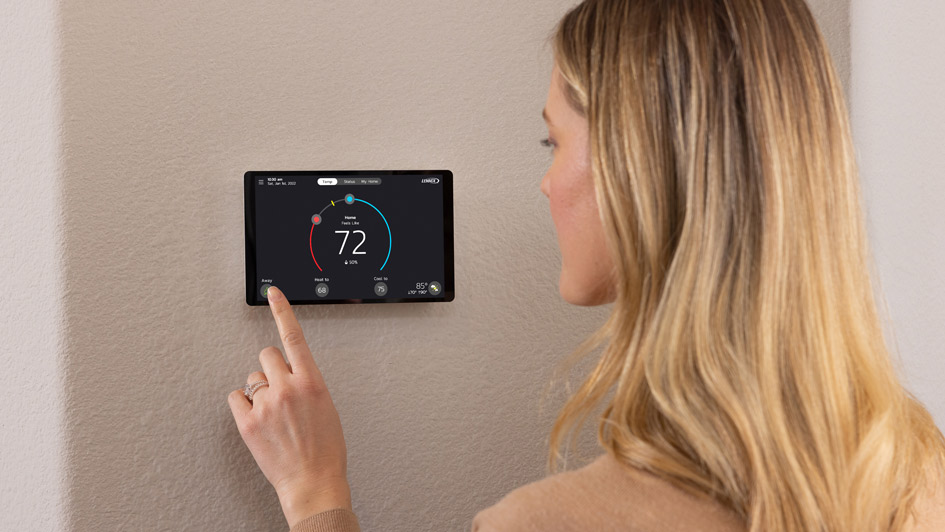
As Earth Day comes up, it's a great opportunity to start planning how you can make your homes more energy-efficient and eco-friendly. There are lots of great options, and having so many possible solutions ensures there’s one that fits every budget. Adopting greener HVAC solutions not only benefits the environment but also contributes to cost savings and a more sustainable lifestyle.
1. Schedule a home energy audit
One of the first steps towards an eco-friendly HVAC system is to request a professional home energy audit. Over the course of an audit, local HVAC experts examine your home's energy usage and note any inefficiencies. They’ll take what they find and discuss things with you before suggesting improvements. This detailed evaluation helps you figure out where energy is wasted and how these improvements can bring lasting benefits.
2. Boosting Energy Efficiency Through Insulation
Having enough insulation is a crucial, if surprisingly underrated option for full-spectrum comfort while simultaneously fine-tuning your home’s average energy use. Insulation strengthens your home’s temperature barrier, preventing heat loss in the winter and holding cool air indoors during the summer.
However, most homes don’t have enough insulation. Installing new or supplemental insulation to attics, walls, floors and basements is the usual strategy. Using high-quality insulation materials such as fiberglass, spray foam or cellulose can dramatically enhance energy efficiency for reduced heating and cooling costs.
3. Ductwork Sealing and Insulation Stops Energy Waste
A leak in your home’s ductwork is a major source of energy loss that can lead to reduced HVAC system efficiency, despite having high-efficiency equipment. To mitigate these losses and avoid future wasted energy, homeowners should have a technician check ductwork for leaks and seal any gaps or cracks as securely as possible.
If that wasn’t good enough, insulating the ductwork around unfinished spaces such as attics or crawl spaces reduces heat transfer into them. Sealing off these inefficient parts of your home is a great example of how a little effort can go a long way.
4. Consider the Benefits of a Programmable/Smart Thermostat
Choosing a programmable thermostat, and particularly a smart thermostat, allows homeowners to personalize their heating and cooling schedules in line with their daily routines and preferences. By learning how to maintain these temperature settings according to your usage habits, these thermostats also optimize energy costs and cut down on waste. Smart thermostats also provide benefits like remote access via mobile devices, or sending helpful notifications for things like maintenance.
5. Stay on Top of Routine HVAC Maintenance
On the topic of maintenance, regular HVAC maintenance is an essential investment you can make for ideal system performance and energy efficiency. Homeowners should arrange for routine tune-ups with local professionals, who can carry out inspections, filter changes, and other tasks to make sure their HVAC systems run smoothly.
By dealing with repair issues right away and keeping internal clean,we can help support your HVAC system and may even increase its life span.
6. Leverage Zoning Systems and Fan Settings for Enhanced Ventilation
Zoning systems and fan settings give homeowners more room-room-room control over their HVAC systems and indoor air quality. Zoning separates different areas of the home to be heated or cooled independently, optimizing comfort and energy usage. And to support the zoning system’s airflow, even adjusting fan settings can help with providing consistent temperatures in your home while lessening the workload on the HVAC system.
7. Think About Upgrading to a New, High-Efficiency HVAC System
For homeowners eager to upgrade, installing a new, high-efficiency HVAC system is always a great choice. The newest HVAC systems utilize variable-speed motors, heat pump technology, and other innovations to provide superior performance while consuming less energy.
All Solutions Heating & Cooling Can Help Your Home Be More Sustainable
Looking to turn your home into an eco-friendly haven? Contact All Solutions Heating & Cooling at 971-245-2459 to schedule a free consultation for eco-friendly home upgrades.
By implementing these HVAC tips, you can reduce not only your environmental impact but also enjoy a more comfortable and more efficient home. We’re proud to make the most of this year’s Earth Day creating a greener future, one household at a time.



